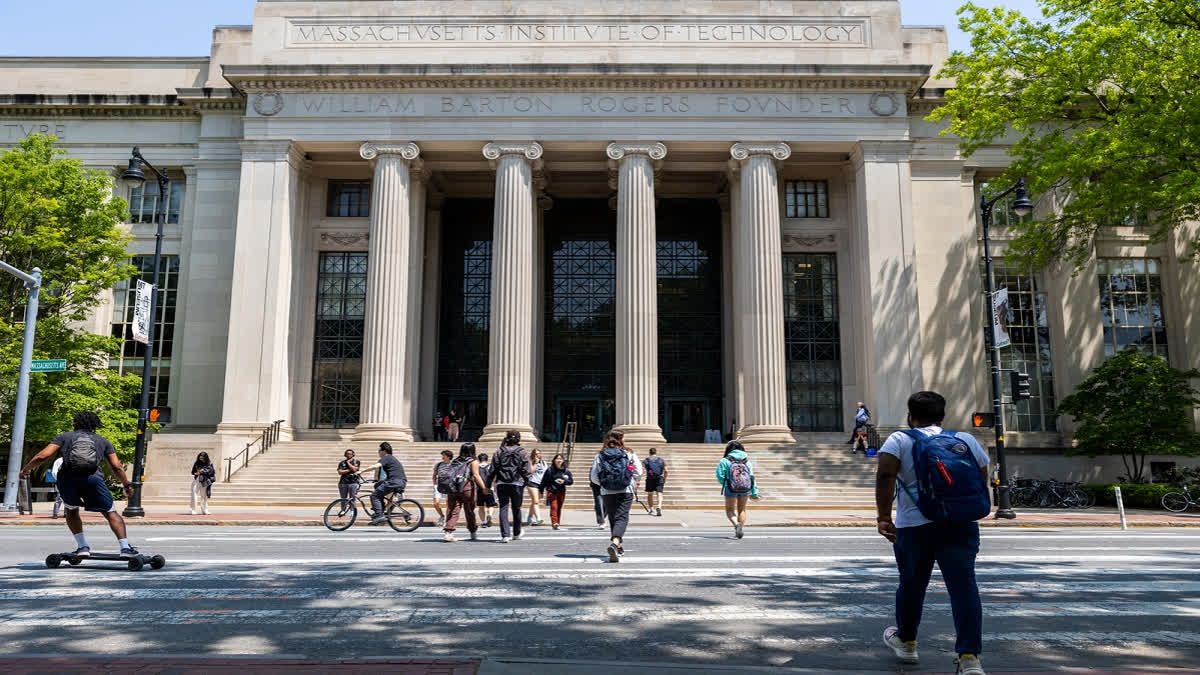Cambridge (US): In the fight to reduce global greenhouse gas emissions, MIT(Massachusetts Institute of Technology) scientists are turning to carbon-capture technology to decarbonize the most intractable industrial emitters. Steel, cement, and chemical manufacture are particularly challenging to decarbonize since carbon and fossil fuels are intrinsic in their production.
Technologies that capture carbon emissions and convert them into forms that can be feed back into the production process may help to reduce overall emissions from these "hard-to-abate" sectors. But thus far, experimental technologies that capture and convert carbon dioxide do so as two separate processes, that themselves require a huge amount of energy to run. The MIT team is looking to combine the two processes into one integrated and far more energy-efficient system that could potentially run on renewable energy to both capture and convert carbon dioxide from concentrated, industrial sources.
In a study appearing today in ACS Catalysis, the researchers reveal the hidden functioning of how carbon dioxide can be both captured and converted through a single electrochemical process. The process involves using an electrode to attract carbon dioxide released from a sorbent, and to convert it into a reduced, reusable form. Others have reported similar demonstrations, but the mechanisms driving the electrochemical reaction have remained unclear.
Also read:'This summer’s swelter was a global record breaker for high heat': Meteorologists
The MIT team carried out extensive experiments to determine that driver, and found that, in the end, it came down to the partial pressure of carbon dioxide. In other words, the more pure carbon dioxide that makes contact with the electrode, the more efficiently the electrode can capture and convert the molecule. Knowledge of this main driver, or “active species,” can help scientists tune and optimize similar electrochemical systems to efficiently capture and convert carbon dioxide in an integrated process.
The study’s results imply that, while these electrochemical systems would probably not work for very dilute environments (for instance, to capture and convert carbon emissions directly from the air), they would be well-suited to the highly concentrated emissions generated by industrial processes, particularly those that have no obvious renewable alternative.
"We can and should switch to renewables for electricity production. But deeply decarbonizing industries like cement or steel production is challenging and will take a longer time,” says study author Betar Gallant, the Class of 1922 Career Development Associate Professor at MIT.
“Even if we get rid of all our power plants, we need some solutions to deal with the emissions from other industries in the shorter term, before we can fully decarbonize them. That’s where we see a sweet spot, where something like this system could fit". "The study’s MIT co-authors are lead author and postdoc Graham Leverick and graduate student Elizabeth Bernhardt, along with Aisyah Illyani Ismail, Jun Hui Law, Arif Arifutzzaman, and Mohamed Kheireddine Aroua of Sunway University in Malaysia.
Also read:Explained: What is green hydrogen and why is it touted as a clean fuel?
Breaking bonds: Carbon-capture technologies are designed to capture emissions, or “flue gas,” from the smokestacks of power plants and manufacturing facilities. This is done primarily using large retrofits to funnel emissions into chambers filled with a “capture” solution a mix of amines, or ammonia-based compounds, that chemically bind with carbon dioxide, producing a stable form that can be separated out from the rest of the flue gas. High temperatures are then applied, typically in the form of fossil-fuel-generated steam, to release the captured carbon dioxide from its amine bond. In its pure form, the gas can then be pumped into storage tanks or underground, mineralized, or further converted into chemicals or fuels.
“Carbon capture is a mature technology, in that the chemistry has been known for about 100 years, but it requires really large installations, and is quite expensive and energy-intensive to run,” Gallant notes. What we want are technologies that are more modular and flexible and can be adapted to more diverse sources of carbon dioxide. Electrochemical systems can help to address that. Her group at MIT is developing an electrochemical system that both recovers the captured carbon dioxide and converts it into a reduced, usable product. Such an integrated system, rather than a decoupled one, she says, could be entirely powered with renewable electricity rather than fossil-fuel-derived steam.
Their concept centers on an electrode that would fit into existing chambers of carbon-capture solutions. When a voltage is applied to the electrode, electrons flow onto the reactive form of carbon dioxide and convert it to a product using protons supplied from water. This makes the sorbent available to bind more carbon dioxide, rather than using steam to do the same. (ANI)
Also read: US puts SpaceX’s next Starship launch on hold, lists 63 ‘corrective actions’



